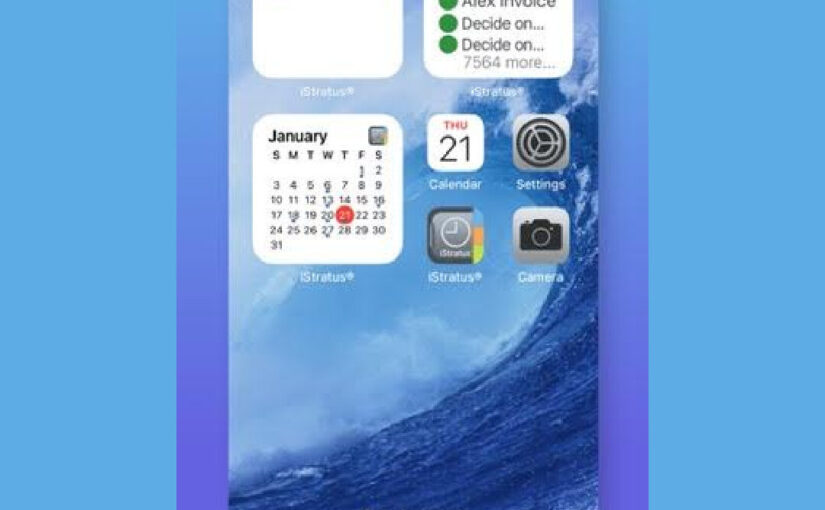What is your favorite ritual?
We all have a way of finding peace in our lives. Now, that’s not about connecting to one’s secret inner hippy, with all that light and love stuff.
Simply put, the busier, the crazier the world becomes around us, the more grounded we need to feel. Finding that sense of calm throughout the crazy, makes all the difference.
Who knows how life is going to turn out? Being organized is one approach that provides us with a sense of stability in this uncertain world. With iStratus we have the ability to be prepared and stay that way.
So… How Can We Keep Calm Throughout The Crazy?
WOULD YOU DARE TO APPLY THAT FAVORITE RITUAL, TO YOUR AGENDA?
The iStratus Organizer is here to help. Designed to keep you on track, with the multitude of tasks we’re expected to juggle –To Keep Calm Throughout the Crazy, finding that balance in your life.
With its multifaceted interface, you can easily and efficiently use the iStratus Organizer to:
-
Notate a clear “To Do” List, in order of priority, with a click of a button.
-
Generate reminders to send follow-up emails.
-
Effortlessly set multiple alarms to navigate schedules that always have you on the go. Whether it’s supporting your kids with multiple activities, or staying atop that crazy college schedule, iStratus has you covered.
-
Create seamless shopping lists for the household meal plan, which does not have to be complicated. Keeping it light, and easy.
-
Quickly coordinate appointments you need to attend for yourself. The process is as simple as you can get.
Leaving a little time for that favorite ritual. Yes, you should!
5 Benefits of Being Organized:
Remember, balance is always key. Thus, there are simultaneously 5 beneficial elements of being organized with iStratus for creating calm:
STRESS RELIEF
Experts suggest an endless list of “things to do” constantly invading your headspace is a major source of stress on the tipping scale of life. It may seem obvious (but not necessarily easy) that becoming organized lessens that pesky weight upon our shoulders.
Bustle.com says, one of the most productive things that can be done is simply tracking your day.
Anyone can take three hours to complete a task, largely because of the task itself or because of the interruptions allowed.
SIMPLE ADJUSTMENTS TO YOUR LIFESTYLE AND TIMING USING ISTRATUS CAN HELP REDUCE THE “STRESSORS” IN YOUR LIFE.
DE-CLUTTER, SLEEP BETTER
Clutter creates chaos. Even if you don’t realize it, clutter in your bedroom can result in the loss of Zzzzzzzz’s. Furthermore, if you are disorganized you may unintentionally become a night owl, staying awake later to do something last minute, or worrying about everything that needs to be addressed.
Use iStratus to de-clutter, schedule that time, and stick to it. Organize the clutter in your life to lessen that endless ‘chaotic craziness’ invading your precious dreams to sleep longer and deeper at night.
A HEALTHIER LIFESTYLE
When you’ve planned out your meals, you’re less likely to forget to eat, avoiding hunger pangs, which flows through to impulsive consumption. You’re also more inclined to find motivation for physical fitness if you plan time on the schedule for it. Increase those necessary endorphins for better health. Who’s up for a triathlon?
ESSENTIAL ‘ME TIME’
We’ve finally arrived at that favorite ritual, we’ve mentioned! Perhaps it’s PB on toast or a warm cup of Tea? (Sometimes, the simplest things mean the most). We frequently leave ourselves until last! You can put yourself on your own agenda when you actually make time for it!
It’s difficult to be at your best for anyone else – family, friends, colleagues – if you’re running on fumes. Bustle.com advises, it doesn’t matter what you do – it matters that you do it.
Try the iStratus App for prioritizing time to do something you enjoy. Coffee anyone?
“Create the kind of climate in your organization [processes] where personal growth is expected, recognized and rewarded.” ~ Author Unknown BE MORE PRODUCTIVE PROFESSIONALLY
Let’s be honest, disorganization is un-motivating. Along with clearing out the clutter in your home life, it also gives you the energy to focus on what’s required during office hours. If you’re feeling tired by four walls, try taking a few minutes to organize your iCalendar or filing your emails.
Did you know that iStratus easily allows you to file photographic evidence with paperwork for an appointment or task? Once it’s where it belongs, you won’t be yelling at your phone, whilst searching inboxes for the information you require at the Doctor’s Office.
A little effort goes a long way. Spending a few minutes each day getting organized makes a difference towards being healthier, happier, and calmer throughout the crazy!
Live life and roll well with iStratus.






